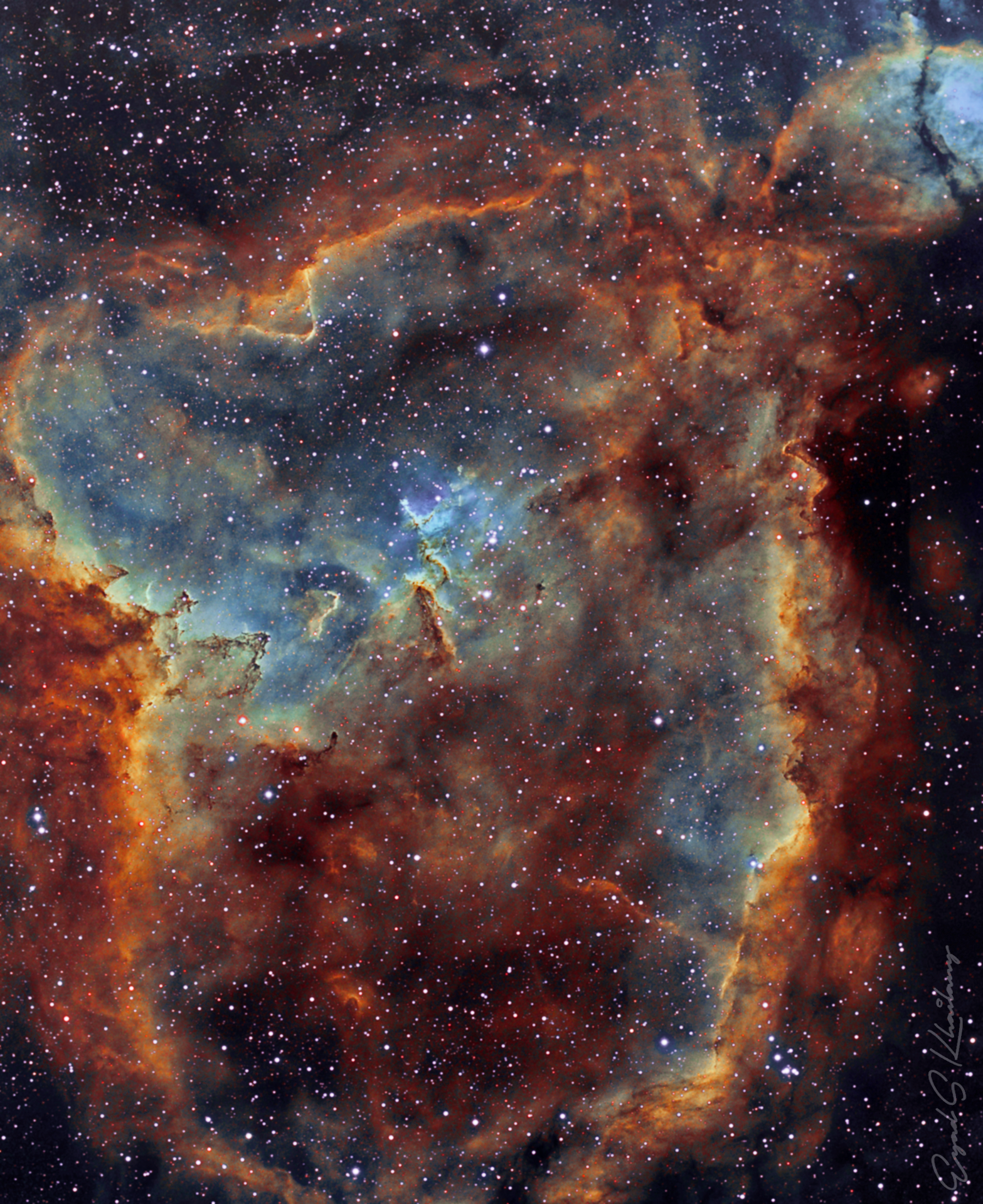By Alexandru Barbovschi | 2021-06-19

On 06/20/2021 02:07 am by Eyad Khailany| Erbil, Iraq
The Heart Nebula, IC 1805, Sharpless 2-190, lies some 7500 light years away from Earth and is located in the Perseus Arm of the Galaxy in the constellation Cassiopeia. It was discovered by William Herschel on 3 November 1787. It is an emission nebula showing glowing ionized hydrogen gas and darker dust lanes.
The brightest part of the nebula (a knot at its western edge) is separately classified as NGC 896, because it was the first part of the nebula to be discovered. The nebula's intense red output and its morphology are driven by the radiation emanating from a small group of stars near the nebula's center. This open cluster of stars, known as Collinder 26 or Melotte 15, contains a few bright stars nearly 50 times the mass of our Sun, and many more dim stars that are only a fraction of our Sun's mass.
Explore Scientific CF102 Triplet refractor
Stellarvue 0.8x focal reducer / flattener
AVX Mount
Canon D 40 (Astro-modified)
Astronomik Ha 6nm / OIII
Optolong L-Pro
10 hours of integration
Stacked in DSS
Edited in PixInsight

